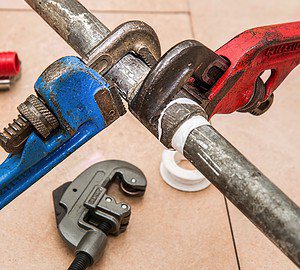Embarking on a home renovation project can be both exciting and challenging, especially when it comes to managing costs. A well-planned budget is the cornerstone of any successful renovation endeavor. It not only aids in keeping your expenses under control, but it also guides your decision-making process throughout the journey.
In the next few sections, we will be discussing seven straightforward steps to create a comprehensive and realistic home renovation budget, ensuring a smooth and financially manageable renovation experience.

1. Define Your Renovation Goals
Clearly stating what you want to achieve with your renovation is the first step toward budget planning. Do you want a simple facelift or a complete overhaul? Answering these questions will give you a clear scope of work. Furthermore, these goals should help you understand Terrazzo installation costs in case that is what you want but also help you evaluate the costs of the projects you want to do in general. However, the cost is not the only reason you should define your goals at the beginning.
Some renovations require a special permit or approval, which can add more time to the planning phase. In addition to that, it will also give you a better idea of the actual timeline for the project. With that, you can organize your time according to the order in which you will need it.
2. Do Your Research
Research the cost of similar renovation projects in your area. Check out home improvement websites, forums, and talk to local contractors for a rough estimate. Knowing what to expect in terms of labor and material costs can help you make more informed decisions. It is also a great way to get an idea of the quality of work contractors offer. Doing this research before creating your budget will not only give you a better understanding of the cost associated with different projects but will also provide insight into which materials might be best for your project. In addition, you can use your research to compare different contractors and get the best deal for your project.
3. Prioritize Your Needs
Once you have a clear understanding of the costs involved, prioritize your needs. Determine what changes are necessary and what can be postponed for future renovation phases. For example, if you can only afford to get new windows and flooring at the moment, consider postponing your bathroom remodel until later. Such decisions will help you stay within budget while still achieving your renovation goals. However, keep in mind that it might be worth spending a little more to get quality materials. Investing in durable, high-quality materials will help you save money in the long run by reducing maintenance and replacement costs.
4. Create a Detailed Cost Estimate
Break down your renovation into smaller tasks and allocate a specific budget for each. Consider costs for materials, labor, permits, and a contingency for unexpected expenses. Having a detailed cost estimate will help you better manage your budget and track the progress of your project. Furthermore, it will also help you make informed decisions when selecting materials or dealing with unexpected costs. For instance, the cost of labor could be higher than expected, but you can look into alternative materials that may cost less. Conversely, you may find quality materials at a cheaper rate, allowing you to reallocate the leftover funds to other tasks.
5. Consider Financing Options
Explore various financing options available for home renovation projects. These could include loans, home equity lines of credit, or savings. If you are considering a loan, compare the interest rates of different lenders and go with the one offering the lowest rate. You can also look into government grants or incentives that may be available for specific renovations, such as energy-efficient upgrades. These could help you save up to 30% of your costs on purchasing materials like insulation or windows in some cases.
6. Consult a Professional
Professionals such as architects, interior designers, or experienced contractors bring a wealth of knowledge and expertise to the table. They can provide realistic estimates, suggest the best materials to use based on your budget, and identify potential problems that might not be immediately noticeable. They can also guide you on how to maximize your renovation dollar, advising on what tasks should be prioritized to enhance the value of your home.
Their insights can help you avoid costly mistakes or oversights, thereby ensuring that your renovation stays within budget and on schedule. Remember, the goal is to increase the value of your home, not just its appeal, so professional advice is often a smart investment.
7. Monitor Your Budget
Once your renovation starts, keep a close eye on your spending. Regularly compare your actual costs with your budgeted amounts to ensure you are on track. If you find yourself overspending on a task, consider cutting costs in other areas to make up for it. You may need to adjust your budget accordingly throughout the renovation process. This will help you stay within budget and finish your project on time.
Creating a house renovation budget doesn’t have to be daunting or overwhelming. By following these seven steps, you can create a realistic and comprehensive budget that will help you achieve your renovation goals. With careful financial planning, you can make sure your home looks beautiful without breaking the bank. From researching costs in advance to monitoring your progress throughout the project, these seven steps will help ensure that your renovation remains on track and within budget.




